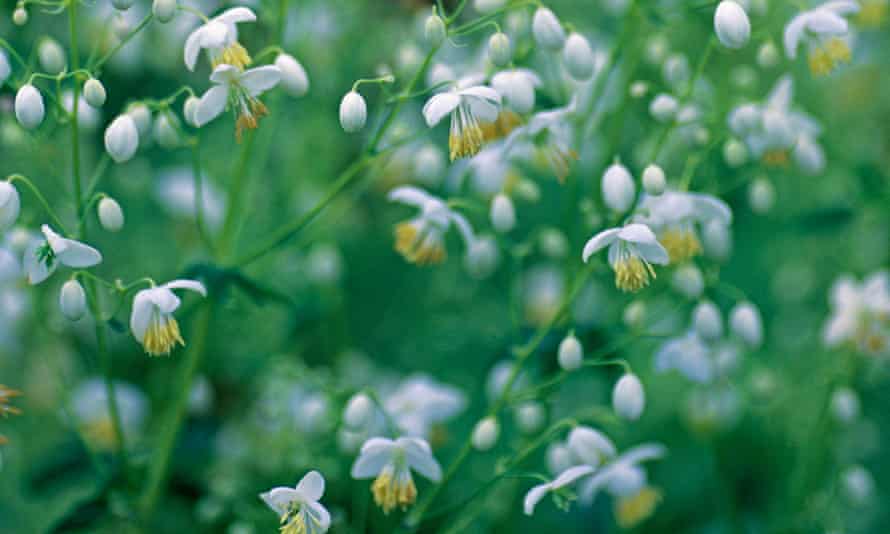I cannot leave my mother’s house without a car full of things: half the contents of her freezer, a vase or a “good” terracotta pot, and always something dug up from the garden. I don’t get a say in these gifts, they are part of the visit.
This is how I come to own Thalictrum delavayi var decorum. In my mother’s garden it grows right where you park up, so it was inevitable, I suppose, that it would end up in the car at some point. It now weaves itself effortlessly beneath the quince tree. In early summer, it unfurls its delicate foliage just as spring things are tiring.

Thalictrum, or meadow rues, are loved for their finely cut, fern-like foliage. Many have deep purple stems that offset the blue-green foliage and are, finally, crowned in masses of tiny flowers in delicate hues of mauve, yellow and white, most flowering from midsummer onwards. They have become a firm favourite in our garden because they do that rare thing of having a strong architectural presence (they are worth it for the stems and foliage alone) while also being airy. They also start off their game strong: their feathery spires begin growing in March and by April are already 30cm or so high.

The foliage can be paired well with tulips, will go on to complement astrantias, and by midsummer will lend its support to grasses, delphiniums, nepetas and salvias. Being part of the buttercup gang (ranunculaceae), they won’t get eaten by deer or rabbits, or ravaged by slugs, because the leaves are full of toxins. As their name suggests (ranunculus means “little frog”), they like damp but well-drained soil in sun to partial shade. Add plenty of organic matter to clay or sandy soils.
My little one, Chinese meadow rue, is best for smaller gardens. It grows to just over a metre high, spreading in time, but is very easy to keep in place by dividing in spring. It can be hard to get hold of, unless you visit my mum. Or try crug-farm.co.uk. Equally elegant and similar in height, but much more widely available, is T. delavayi ‘Album’ with its pure white flowers which glow at dusk (from ballyrobertgardens.com).
For those with more space, try T. ‘Elin’, with its deep, damson-stained stems, purple-flushed foliage and purple and cream flowers. It grows to 2.5 metres. The largest of the lot is T. ‘Tukker’s Princess’ (try beechesnursery.co.uk), which grows to 3 metres tall and has thick, striped, pink, grey and lime-green stems with glaucous foliage and large, soft yellow flowers that appear from early to mid-summer. It would make an amazing statement plant for partial shade.